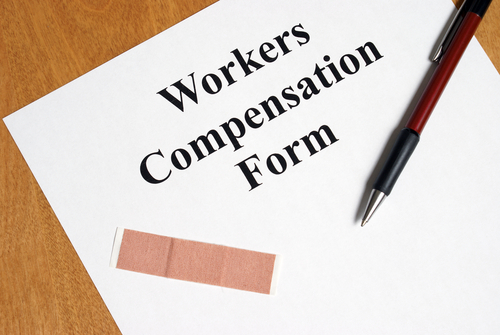Workers’ compensation laws have come about as a way to establish a means of compensation for injured employees while simultaneously reducing the amount of litigation against employers when employees are injured on the job. The workers’ compensation laws are administered on the state level, and the federal government has its own separate program. Workers’ compensation laws exist in all U.S. states and cover most employers, but most states have exclusions and limits that exclude some smaller employers. Check your local laws for details.
 |
As its core, workers’ compensation is an insurance program for employers; the employer typically pays for workers’ compensation insurance coverage, which then pays the medical bills and lost wages for an injured employee. In return, the employee agrees to accept this form of compensation and to not file a legal claim against the employer for further compensation after an injury.
These laws were created to have a system in which employees need not fear having to pay medical bills in the case of a workplace injury, and need not have to sue an employer (and win) to get compensation for such. They were also created to help employers not fear bankruptcy over a workplace accident since, before the enactment of workers’ comp laws, there were no limits on the payouts for cases of negligence on the part of the employer.
In practice, this system works by eliminating the question of negligence or causation—if an injury occurs on the job, it will usually be covered by workers’ compensation insurance, regardless of the root cause of the accident or injury. In other words, it will be paid for whether the employer or employee was at fault—fault is not questioned as a prerequisite for payment.
Workers’ Compensation Basics: What Is Covered?
If an employee is injured or suffers an illness due to his or her job, workers’ compensation can cover these types of expenses:
- Wage replacement for time off work (wage replacement usually has limits)
- Compensation for future income loss when applicable
- Payment or reimbursement of medical costs for the illness or injury
- Benefit payments to the family of an employee who was killed during employment
Most states also protect employees from retaliation for filing a workers’ compensation claim.
Workers’ Compensation Basics: What Is NOT Covered?
As part of the workers’ compensation laws across most states, the tradeoff for employees is that they give up the right to file a lawsuit against the employer for further damages. This means that the following types of payments are generally not covered under workers’ compensation programs:
- Pain and suffering
- Punitive damages
- Other compensation for an employer’s negligent behavior (there are, however, some exceptions at the state level)
Workers’ compensation laws have pros and cons. Advocates argue that it makes the workplace safer, protects employees, keeps employees from having the burden of proving negligence to get compensation, and thus, keeps costs low for everyone. Detractors, on the other hand, will tell us that it doesn’t go far enough with benefits, does not give employers enough incentive to stop accidents from occurring in the first place, and systematic fraud keeps employer insurance costs higher than necessary—which negates some of the employer benefits of the law. Overall, these pros and cons affect our views of the system, but the law does provide protection for both employees and employers when used correctly.
About Bridget Miller:
Bridget Miller is a business consultant with a specialized MBA in International Economics and Management, which provides a unique perspective on business challenges. She’s been working in the corporate world for over 15 years, with experience across multiple diverse departments including HR, sales, marketing, IT, commercial development, and training.
